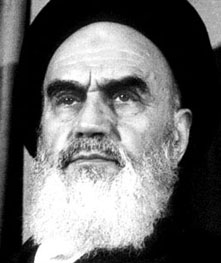

Two of the most earthshaking leaders, Khomeini and Gandhi, had diametrically opposed views on revolution. While Khomeini was all about war, Gandhi was all about non-violence. While Khomeini was supporting the US Embassy hostage crisis, Gandhi led the Salt March. Khomeini was all about one religion, Islam, while Gandhi was advocating for peace and unity between the hindus and the muslims in India. How can two such different people both be the faces of revolution? Is it the country that makes the difference between violence and nonviolence, Khomeini and Gandhi? Religion played a large role in the Iranian Revolution, part by Islam being such a large part of the people's lives and part by the emphasis Khomeini put on religion. They began their revolution like a jihad, or holy struggle (yet commonly associated with violence). In India, human rights and equality were the motivating factors, and the means to achieve them was through satyagraha. Would satyagraha have worked in Iran? It is not likely that a peaceful uprising would be developed in a country already ruled by terror. Could a Khomeini-like figure have succeeded in India? Violence seems to be the human instinct during a revolution and there was undoubtably violent acts during the Indian Revolution. It is more common for a revolution to be led by a "Khomeini" than by a "Gandhi."
http://www.nndb.com/people/915/000031822/khomeini2-sized.jpg
http://www.norcalblogs.com/post_scripts/gandhi.jpg
I'm not sure I agree that "It is not likely that a peaceful uprising would be developed in a country ruled by terror." The Shah of Iran was probably no more repressive than Hosni Mubarak, and yet Mubarak was driven out by a non-violent revolution. I wonder, however, if violent leaders tend to drive on the non-violent, in a sort of revolutionary version of Gresham's Law: violent leaders drive out nonviolent leaders. There were more moderate leaders, including moderate clerics, in Iran, but it was Khomeini that came out on top.
ReplyDelete